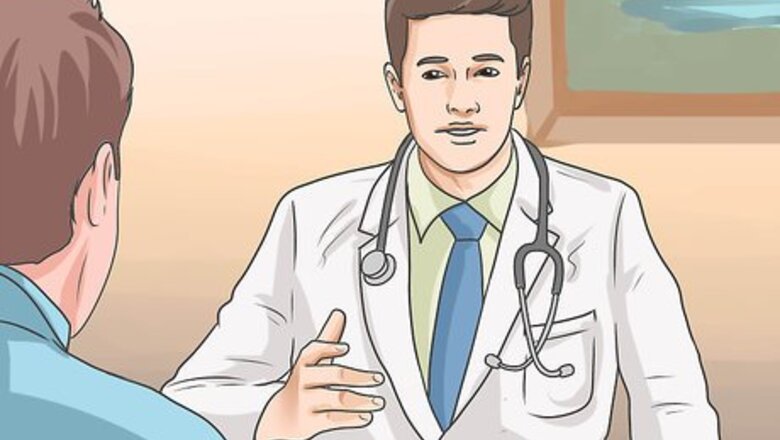
views
Using Natural Methods

Speak to your doctor. Hormonal shifts, such as puberty, pregnancy or menopause can cause a temporary increase in body hair. These hormonal shifts are completely normal and after they finish, the hair growth is likely to diminish. Hair growth can also be caused by medical conditions that you may be able to resolve through treatment. Conditions like polycystic ovary syndrome (PCOS), adrenal gland tumors and Cushing’s disease could each cause your body to produce too many male hormones.

Check to see if you’re taking medications that can cause hair growth. There are a number of medications that may cause unusual hair growth as a side effect. Depending on the medication and the condition you are using it to treat, you may be able to prevent further hair growth simply by changing to an alternative medication. Look your prescriptions up online to check for side effects or contact your doctor to discuss it. Some medications that may cause hair growth are: Some anti-seizure medications Steroids like cortisone IFG-1 (a specific form on insulin) Some birth control pills

Reduce testosterone with spearmint tea. Studies have shown that you can reduce the amount of androgen in your body while increasing the level of female hormones your body produces. Through consistent drinking of spearmint tea, you can produce a noticeable drop off in body and facial hair growth. Make tea using 1 heaping teaspoon or 1.5 teaspoons of chopped spearmint leaves. Brew the spearmint leaves with one cup of boiling water for ten minutes. Drink two cups of spearmint tea a day for a minimum of five days to begin to see results.

Consider losing weight if you are overweight or obese. Dropping unhealthy weight has been shown to significantly reduce hair growth in some cisgender women. Having excess body fat can affect the way your body produces hormones, which can lead to excess body hair growth. Losing weight can help your body to better regulate your hormone levels, thus limiting your body’s production of body hair. Females with a body mass index (BMI) higher than 25 have significantly higher levels of testosterone than females with a lower BMI. Make sure to pursue healthy methods of losing weight. Losing weight and limiting hair growth are just a few of the benefits of eating healthy.
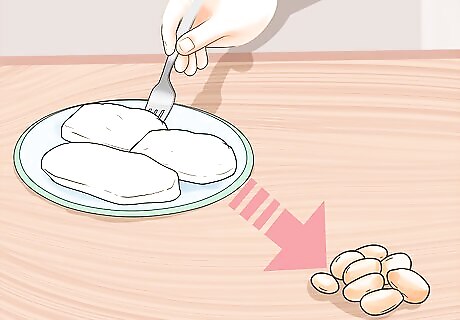
Replace red meat with soy. Diets that are high in red meat can increase androgen levels in your body, resulting in more hair growth. Cutting down the amount of red meat that you eat can affect how much hair your body grows. Soy products have been known to actually increase the levels or estrogen in your body, which can combat the effects of the naturally occurring androgens in your system. Reduce the amount of red meat in your diet to help control hormone production. Increasing the soy in your diet can help increase estrogen production to combat hair growth caused by hormones. Research has not definitively linked the ingestion of soy products with feminizing effects on males including gynecomastia (enlarged breasts) or reduction in fertility.
Trying Electrolysis

Search for a licensed electrologist in your area. Most states require people performing electrolysis to be licensed or certified. Even if your state doesn’t require it, look for a certification from an electrology school before undergoing treatment. Electrolysis is relatively non-invasive but there are some risks involved. Electrolysis involves inserting a needle into each hair follicle and emitting an electric current to destroy it. Electrolysis using a needle to kill hair follicles is the only electrolysis method that will prevent further hair growth in the future. Look online for reviews of local electrologists, then contact them to ask about their credentials. If the electrologist says they use electronic tweezers or photoepilators, you should choose someone else, because these methods have proven to not be permanent or last longer than normal tweezing.

Get a consultation. Once you find an electrologist, make an appointment for a consultation. At your appointment, the electrologist should go over the procedure with you, answer any of your questions, and discuss how many sessions will be required in order to reach your hair removal goals. Make sure you feel comfortable in the environment and discuss any concerns you may have with the electrologist. Most electrolysis clinics offer free consultations. Ask how much each session costs, how long they last, and how long the practitioner or electrologist has been conducting these procedures.
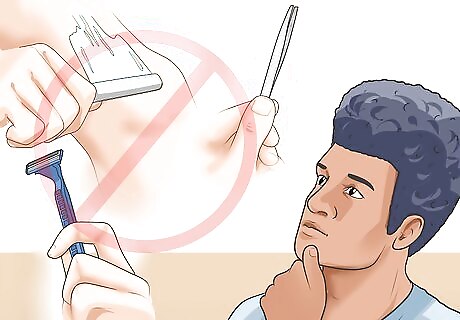
Refrain from temporary forms of hair removal for one to two weeks. Prior to your first electrolysis appointment, avoid shaving, waxing or plucking the hair you intend to have removed. The electrolysis procedure requires the hair to be at the surface in order to locate and penetrate each hair follicle. Removing your hair can make that difficult. Electrolysis is usually done in small areas at once, so you can continue to shave or wax areas that will not be treated until a later session.
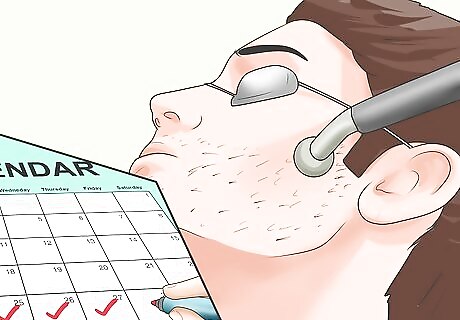
Complete your scheduled treatments. You will likely need to return for a number of treatments, depending on the amount of hair you are having removed and the area of your body. As you have the hair removed via electrolysis, it should be permanently arrested, preventing any further growth from the treated hair follicles. You will likely need to apply a cream with antiseptic to each treated area after your sessions to soothe it and prevent infection. Electrolysis can be mildly painful, but shouldn’t be overwhelming. If you experience extreme discomfort, make sure to address it with the practitioner.
Getting Laser Hair Removal
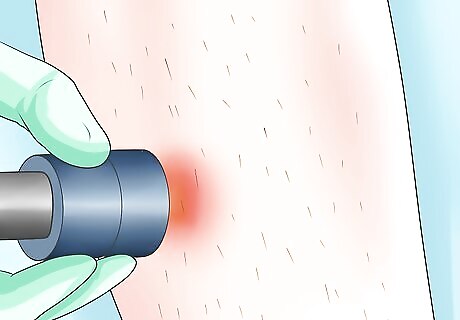
Ensure laser hair removal is right for you. Laser hair removal is not considered a permanent method of preventing hair growth, but it can greatly reduce the amount of hair you see growing in specific areas after a number of treatments. Laser hair removal can be rather expensive and will require repeated visits for each portion of your body you hope to treat. Laser hair removal procedures can be quick. One laser can treat multiple hair follicles at once, and it requires only an instant to work. Your skin may feel as if it is sunburned after the procedure for a few days, but there are few risks otherwise.

Research licensed laser removal technicians in your area. In some states, this procedure can only be done by a physician. You can often find certified laser hair removal practitioners or physicians at cosmetic surgery practices. Use the internet to research local practices and look for reviews and credentials listed online. Ask questions about the physician overseeing the procedure and their credentials when looking for a laser hair removal clinic. Look for membership in professional organizations like The American Society for Laser Medicine and Surgery (ASLMS) or the National Council on Laser Excellence (NCLE).
Consult with the technician or physician. Discuss how many treatments you can expect to pay for before you see long-lasting results. It may take between three and seven treatments to permanently reduce hair growth. Laser hair removal is often not a completely permanent solution, so be wary of any clinic making such promises. "Laser hair reduction" is a more accurate description of laser hair removal. Even if you get to the point where you don't need to shave, you may still need to have a touch-up treatment in a couple of years. Keep in mind that cost varies by the size of the treatment area and, depending on the luxury of the location, a session could cost several hundred dollars.

Allow normal hair growth for six weeks prior to your appointment. Laser hair removal requires the targeting of hair follicles, which may be removed by waxing or plucking. Allow your hair to grow naturally for six weeks in order to ensure the laser can properly target and kill hair follicles. Do not wax or pluck hairs between laser hair removal sessions either. You can shave between treatments, if desired. Just don't use any type of hair removal method that completely pulls the hair out.
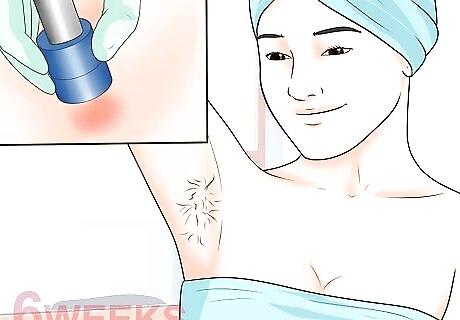
Schedule laser hair removal sessions every six weeks. Laser hair removal can remove hair for up to six weeks, but the hair will continue to grow back. After three to seven treatments in one area, hair growth can be permanently limited, but you still may experience limited hair growth in those regions. Wearing a cold compress after each procedure can soothe the affected skin and limit irritation. Anti-inflammatory creams or lotions can also increase comfort immediately after the procedure.




















Comments
0 comment